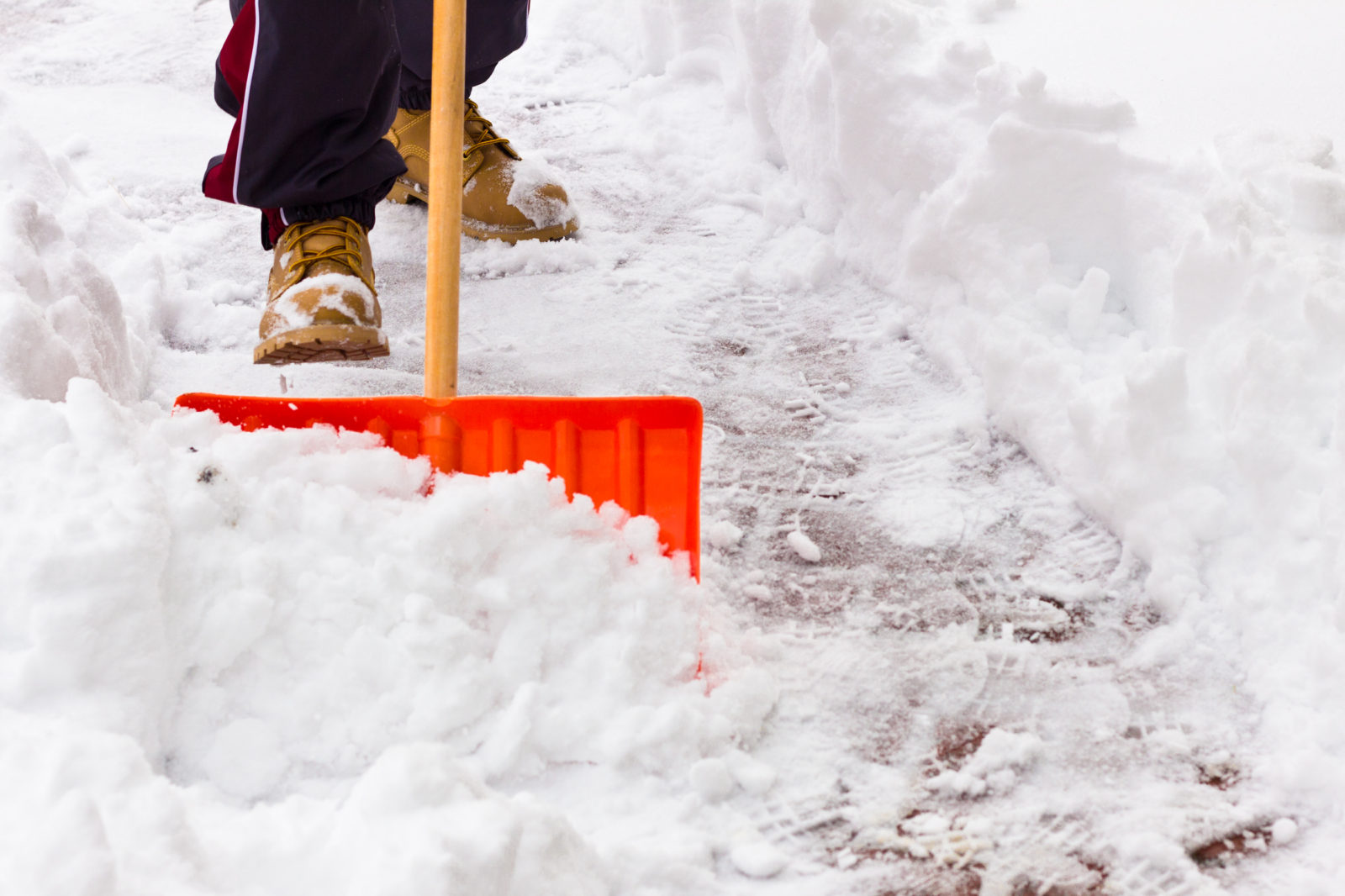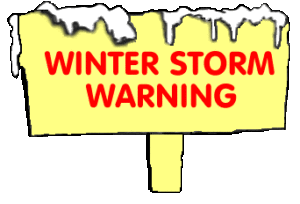Are You Prepared for the Winter Storm?
 December 15, 2020
December 15, 2020
Regional weather forecasts are warning of a winter storm with significant snowfall Wednesday into Thursday — well over a foot in some places.
For the greater Lehigh Valley Area, Weather.gov warns,
“Heavy mixed precipitation expected. Total snow accumulations in excess of 12 inches along with ice accumulations of a light glaze. Winds gusting as high as 35 mph. … Travel could be very difficult to impossible. The hazardous conditions could impact the evening commute on Wednesday and the morning commute on Thursday. The heavy snow could result in power outages.“
Forget the bread and milk — if you haven’t already, now’s the time to review your emergency preparedness plan.
Be Prepared
Here’s what the experts at The Red Cross and Ready.gov recommend:
First, make a Family Communications Plan. Your family may not be together when disaster strikes, so it is important to know how you will contact one another, how you will get back together and what you will do in case of an emergency.
Then Make Sure You Have:
- A full tank of gas in your vehicle, along with an emergency kit.
- Rock salt or more environmentally safe products to melt ice on walkways. Kitty litter can also be helpful.
- Sand to improve traction.
- Snow shovels and other snow removal equipment.
- Sufficient heating fuel. You may become isolated in your home and regular fuel sources may be cut off. Store a good supply of dry, seasoned wood for your fireplace or wood-burning stove.
- Adequate clothing and blankets to keep you warm.
- Warm coats, gloves or mittens, hats, boots and extra blankets and warm clothing for all household members
- Water—at least a 3-day supply; one gallon per person per day
- Food—at least a 3-day supply of non-perishable, easy-to-prepare food
- Flashlights – including one in your vehicle if you must travel.
- Battery-powered or hand-crank radio (NOAA Weather Radio, if possible)
- Extra batteries
- First aid kit
- Medications (7-day supply) and medical items (hearing aids with extra batteries, glasses, contact lenses, syringes, etc.)
- Multi-purpose tool
- Sanitation and personal hygiene items
- Cell phone with chargers
- Extra cash
- Baby supplies (bottles, formula, baby food, diapers)
- Pet supplies (collar, leash, ID, food, carrier, bowl)
- Tools/supplies for securing your home
During The Winter Storm
- Bring pets/companion animals inside during winter weather. Move other animals or livestock to sheltered areas with non-frozen drinking water.
- Listen to a NOAA Weather Radio station or other local news channels for critical information on snow storms and blizzards from the National Weather Service (NWS)
- Stay indoors whenever possible.
- Walk carefully on snowy, icy, walkways.
- Avoid overexertion when shoveling snow. Overexertion can bring on a heart attack—a major cause of death in the winter. Use caution, take breaks, push the snow instead of lifting it when possible, and lift lighter loads.
- Keep dry. Change wet clothing frequently to prevent a loss of body heat. Wet clothing loses all of its insulating value and transmits heat rapidly.
- Drive only if it is absolutely necessary.
- If the pipes freeze, remove any insulation or layers of newspapers and wrap pipes in rags. Completely open all faucets and pour hot water over the pipes, starting where they were most exposed to the cold (or where the cold was most likely to penetrate).
- Maintain ventilation when using kerosene heaters to avoid build-up of toxic fumes. Refuel kerosene heaters outside and keep them at least three feet from flammable objects.
- Conserve fuel, if necessary, by keeping your residence cooler than normal. Temporarily close off heat to some rooms.
If You Must Drive
Drive only if it is absolutely necessary. If you must drive during a winter storm:
- Pack an emergency travel kit, and include a flashlight, blanket, drinking water, and emergency food, such as granola bars.
- Keep a shovel and a bag of rock salt in the trunk.
- Travel during the day.
- Don’t travel alone.
- Keep others informed of your schedule; stay on main roads and avoid back road shortcuts.
- Let someone know your destination, your route, and when you expect to arrive. If your car gets stuck along the way, help can be sent along your predetermined route.
Also Watch For:
- Signs of frostbite, which occurs when the skin and body tissue just beneath it freezes. Loss of feeling and white or pale appearance in extremities, such as fingers, toes, earlobes, face, and the tip of the nose.
What to Do: Cover exposed skin, but do not rub the affected area in an attempt to warm it up. Seek medical help immediately. - Signs of Hypothermia: Dangerously low body temperature. Uncontrollable shivering, memory loss, disorientation, incoherence, slurred speech, drowsiness, and apparent exhaustion.
What to Do: If symptoms of hypothermia are detected take the person’s temperature. If it is below 95°, seek medical attention immediately. Get the victim to a warm location. Remove wet clothing. Warm the center of the body first by wrapping the person in blankets or putting on dry clothing. Give warm, non-alcoholic beverages if the victim is conscious. Seek medical help immediately.
Remember, Carbon Monoxide Kills
- Never use a generator, grill, camp stove or other gasoline, propane, natural gas or charcoal-burning devices inside a home, garage, basement, crawlspace or any partially enclosed area. Locate unit away from doors, windows and vents that could allow carbon monoxide to come indoors.
- The primary hazards to avoid when using alternate sources for electricity, heating or cooking are carbon monoxide poisoning, electric shock and fire.
- Install carbon monoxide alarms in central locations on every level of your home and outside sleeping areas to provide early warning of accumulating carbon monoxide.
- If the carbon monoxide alarm sounds, move quickly to a fresh air location outdoors or by an open window or door.
- Call for help from the fresh air location and remain there until emergency personnel arrive to assist you.
Additional Tips
- Running water, even at a trickle, helps prevent pipes from freezing.
- Open kitchen and bathroom cabinet doors to allow warmer air to circulate around the plumbing. Be sure to move any harmful cleaners and household chemicals up out of the reach of children.
- Frozen pipes? Frozen meter? Check here first.
- Go to a designated public shelter if your home loses power or heat during periods of extreme cold.
- Before tackling strenuous tasks in cold temperatures or a winter storm, consider your physical condition, the weather factors and the nature of the task.
- Help people who require special assistance such as elderly people living alone, people with disabilities and children.
Please Clear Hydrants
Please adopt a fire hydrant and keep it clear of snow during and after the winter storm — if there’s a fire, the time it takes firefighters to clear the hydrant could mean the difference between a happy ending and a disaster. Also, please clear a path to your utility meters.